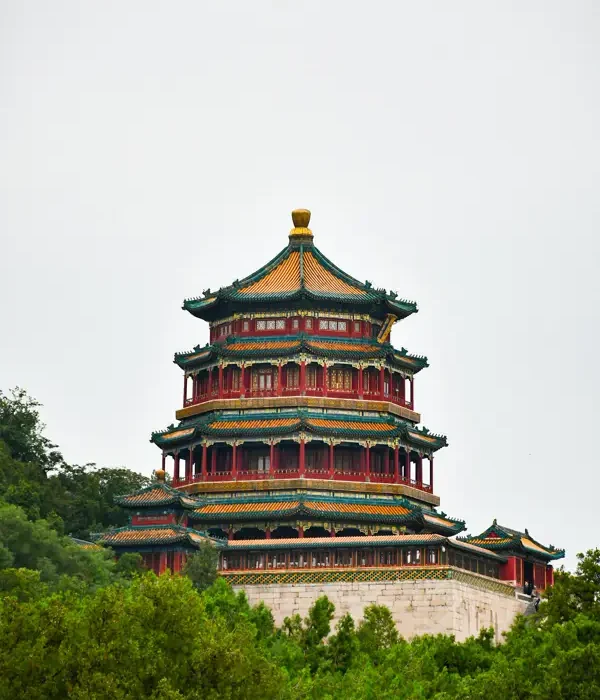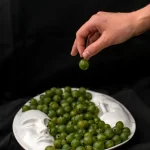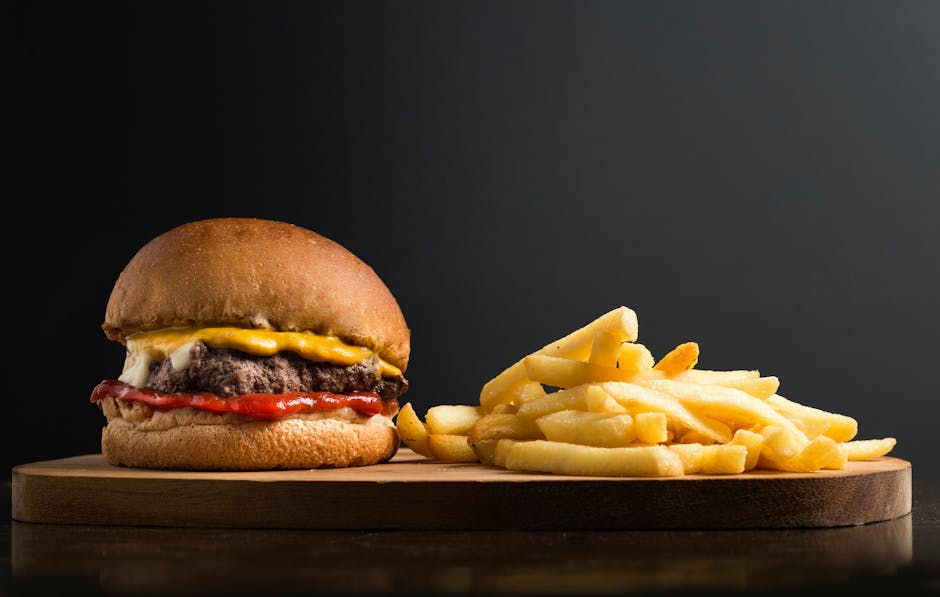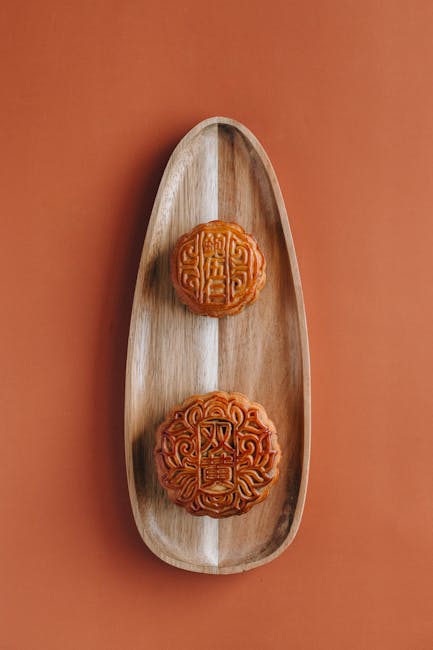Prepare yourself for a culinary journey to the heart of Beijing, China, where we’ll unlock the secrets of creating authentic Homemade Peking Duck. This iconic dish, a masterpiece of Chinese cuisine, boasts a history as rich and layered as its flavor profile. Peking duck, or Běijīng kǎoyā (北京烤鸭) in Mandarin, isn’t just a meal; it’s a cultural experience. Its origins trace back centuries, with some accounts suggesting its refined form emerged during the Yuan Dynasty (1271-1368), though variations existed long before. However, its widespread popularity and association with imperial banquets solidified during the Ming and Qing Dynasties.
The meticulous preparation and presentation of Peking duck reflects a deep-seated appreciation for culinary artistry. The process, traditionally involving a specific breed of duck, meticulous air-drying, and a unique roasting technique using a wood-fired oven, is a testament to generations of culinary expertise. This isn’t a dish whipped up quickly; it’s a labor of love, demanding patience and precision. The crispy skin, glistening with rendered fat, is the star of the show, often served with thin pancakes, scallions, and sweet bean sauce. Estimates suggest that over 10 million Peking ducks are consumed annually in Beijing alone, highlighting the dish’s enduring popularity.
Beyond its deliciousness, Peking duck holds significant cultural weight. It’s frequently featured at celebratory feasts and special occasions, representing prosperity, good fortune, and a sense of national pride. The intricate process of preparing the duck, from selecting the right bird to the precise timing of the roasting, is often passed down through families, becoming a cherished tradition. Furthermore, the dish’s popularity has extended far beyond China’s borders, becoming a globally recognized symbol of Chinese gastronomy. Its presence on menus in restaurants worldwide exemplifies its cultural impact and enduring appeal. Today, we’ll demystify this culinary icon, guiding you through a step-by-step recipe that allows you to experience the magic of Peking duck in your own kitchen.
Ingredients and Measurements
This recipe yields approximately 4 servings of delicious Peking Duck. Accurate measurements are crucial for achieving the perfect crispy skin and tender meat. Use a kitchen scale for the most precise results, especially when measuring the duck and spices.
For the Duck:
- 1 (4-5 pound) whole Peking duck, preferably a younger bird for more tender meat. Look for a duck with a plump breast and bright skin. Avoid ducks with any bruises or discoloration.
- 2 tablespoons Shaoxing rice wine (or dry sherry as a substitute). This adds a subtle sweetness and helps tenderize the meat.
- 1 tablespoon dark soy sauce (for color and umami). Avoid using too much, as it can make the duck overly salty.
- 1 tablespoon light soy sauce (for balance of flavor).
- 1 tablespoon granulated sugar (to balance the savory flavors and promote browning).
- 1 teaspoon five-spice powder (a classic Chinese blend; you can buy pre-ground or make your own with star anise, cloves, Sichuan peppercorns, cinnamon, and fennel seeds). Adjust the amount to your spice preference.
- 1 teaspoon salt (use kosher salt or sea salt for better flavor control).
- ½ teaspoon freshly ground black pepper.
- 1 cup boiling water (for the initial rinsing and to help remove impurities).
For the Air-Drying Process:
- A rack placed inside a roasting pan or a similar setup to allow air circulation around the duck. Proper air circulation is key to achieving perfectly crispy skin.
For the Cooking Process (Optional additions):
- 2 tablespoons vegetable oil or duck fat (for basting during roasting). Duck fat is traditionally used for the richest flavor.
For the Pancakes and Accompaniments (quantities depend on your preference):
- 1 package of thin Mandarin pancakes or homemade pancakes (recipe readily available online).
- ½ cup scallions, thinly sliced (for garnish).
- ½ cup hoisin sauce (a sweet and savory sauce).
- ½ cup julienned cucumber (optional, for a refreshing contrast).
- ½ cup finely grated ginger (optional, for added zest).
Important Note: These ingredient quantities are guidelines. Adjust them based on the size of your duck and your personal preferences. For example, if you have a smaller duck, you might reduce the amount of seasoning proportionally. Always taste and adjust throughout the cooking process.
Professional Recommendation: Before starting, thoroughly rinse the duck inside and out with the boiling water. This step helps remove any impurities and prepares the skin for optimal crisping.
Duck Preparation (Cleaning, Scoring)
Preparing the duck properly is crucial for achieving crispy skin and tender meat in your Peking Duck. This section details the cleaning and scoring process, ensuring your duck is ready for the flavorful marinade and roasting.
1. Thawing and Cleaning: Begin by thawing your duck completely. A 4-5 pound duck will take approximately 24-48 hours in the refrigerator. Never thaw a duck at room temperature to avoid bacterial growth. Once thawed, rinse the duck thoroughly inside and out under cold running water. Pay close attention to the cavity and remove any giblets (heart, liver, gizzard) that may be present. Pat the duck completely dry with paper towels. This is essential for achieving crispy skin later.
2. Scoring the Skin: Scoring the duck’s skin allows for even cooking and maximizes surface area for crispiness. Use a very sharp, thin-bladed knife for this step. Avoid cutting into the meat; you only want to score the skin. Begin by placing the duck breast-side up on a cutting board. Using a sharp knife, make shallow, diagonal cuts across the skin, approximately ½ inch apart and about ⅛ inch deep. Do not cut through the fatty layer beneath the skin. Repeat this process across the entire breast, ensuring even spacing between the cuts.
3. Scoring the Legs and Wings: Next, turn the duck over and score the skin on the legs and wings in a similar fashion. Make sure the cuts are shallow and consistent to ensure even cooking and browning. Because the skin on the legs and wings is thicker, you might need to slightly increase the depth of the scores, but still remain cautious not to penetrate the muscle. Avoid cutting too deeply into the meat, as this will allow moisture to escape during cooking and result in dry duck.
4. Prick the Fat Layer (Optional): For extra crispy skin, you can use a fork or a small needle to prick the fatty layer underneath the scored skin. This helps release some of the fat during roasting, contributing to a crispier result. Be careful not to puncture the skin itself, as this can lead to leakage and uneven cooking.
5. Removing Excess Fat (Optional): Some recipes recommend removing excess fat from the cavity and around the neck. This can help reduce the overall fat content and promote crispier skin. Use kitchen shears or a sharp knife to carefully trim away any visible excess fat. However, remember that some fat is beneficial for flavor and moisture retention, so don’t overdo this step.
Professional Tip: For a truly professional finish, consider using a specialized scoring tool. These tools are designed to create consistent and precise scores without cutting into the meat.
Once your duck is cleaned and scored, it’s ready for the next stage of the recipe: marinating. Proper preparation is key to achieving perfect Peking Duck – so take your time and follow these steps carefully.
Brine/Marinade for Peking Duck
The success of Peking Duck hinges significantly on the preparation of the duck itself, and a well-crafted brine and marinade are paramount. This section details the process of brining and marinating your duck for optimal flavor and texture. We’ll be using a two-stage process: a simple salt brine followed by a flavorful marinade.
The Brine: The brine’s primary purpose is to season the duck deeply and to help retain moisture during the roasting process. Over-brining can lead to a salty or mushy texture, while under-brining results in a dry and less flavorful bird. Accuracy is key.
For a 4-5 lb duck, you will need:
- 4 cups cold water
- 1/4 cup kosher salt (reduce to 2 tablespoons if using table salt)
- 2 tablespoons granulated sugar
In a large container, combine the water, salt, and sugar. Stir until the salt and sugar are completely dissolved. Ensure the salt is fully dissolved before adding the duck. Submerge the duck completely in the brine, ensuring it’s fully covered. If necessary, use additional water or a weight to keep the duck submerged. Refrigerate for at least 6 hours, and up to 12 hours. Do not brine for longer than 12 hours, as this can lead to an overly salty duck.
The Marinade: After brining, the duck will benefit from a flavorful marinade which enhances its taste and contributes to the characteristic crispy skin. This marinade is designed to complement the richness of the duck.
For the marinade, you’ll need:
- 1/4 cup Shaoxing rice wine (or dry sherry)
- 2 tablespoons dark soy sauce
- 1 tablespoon light soy sauce
- 1 tablespoon hoisin sauce
- 1 tablespoon grated fresh ginger
- 2 cloves garlic, minced
- 1 teaspoon five-spice powder
- 1/2 teaspoon sesame oil
Remove the duck from the brine and rinse thoroughly under cold water to remove any excess salt. Pat the duck completely dry with paper towels. This step is crucial for achieving crispy skin. In a bowl, whisk together all the marinade ingredients until well combined. Place the duck in a resealable bag or a container large enough to hold it comfortably. Pour the marinade over the duck, ensuring it’s coated evenly. Massage the marinade into the duck’s skin and cavity for better penetration of flavor.
Refrigerate the marinated duck for at least 4 hours and up to overnight. Longer marinating times will result in deeper flavor penetration, but avoid exceeding 24 hours. Before roasting, remove the duck from the marinade and pat it dry again with paper towels. This final drying step is absolutely essential for achieving that signature crispy Peking duck skin.
Important Note: Adjust the quantities of the brine and marinade according to the size of your duck. Always prioritize thorough brining and marinating for the best results. Remember to use high-quality ingredients for the optimal flavor profile in your Peking Duck.
Air Drying the Duck
Air drying the duck is a crucial step in achieving that signature crispy Peking duck skin. This process removes excess moisture from the duck’s surface, allowing for optimal browning and crispiness during roasting. Proper air drying takes time and patience, but the results are well worth the effort. We’ll be using a method that combines both chilling and air drying for the best results.
Begin by thoroughly patting the duck dry. Use generous amounts of paper towels to absorb as much surface moisture as possible, both inside and out. Pay particular attention to the cavity and the areas between the legs and body. Any remaining moisture will hinder the crisping process.
Next, prepare the duck for hanging. You will need a suitable rack or a sturdy wire rack placed inside a large roasting pan. This will allow for air circulation around the duck. Avoid placing the duck directly on a flat surface as this will restrict airflow and potentially lead to uneven drying.
Place the duck on the prepared rack, breast side up. This ensures that the breast skin, which often takes longer to crisp, receives adequate airflow. Do not overcrowd the rack; ensure there is ample space around the duck for proper air circulation.
Refrigerate the duck uncovered for at least 12 hours, and preferably 24 hours. This crucial step allows the skin to dry and firm up. The cold temperature also slows down bacterial growth. The longer you can air dry, the crispier the skin will become. Avoid covering the duck during this period, as this will trap moisture and negate the drying process. A refrigerator with good airflow is ideal.
After the initial refrigeration period, you can optionally continue air drying at room temperature for another 2-4 hours. This step is particularly important during warmer months or if you’re aiming for maximum crispiness. Monitor the duck closely during this time and ensure it is not exposed to direct sunlight or excessive heat, which could accelerate spoilage. The goal is to achieve a taut, almost leathery texture to the skin.
Inspect the duck’s skin before roasting. It should be dry to the touch and appear slightly taut. If it still feels damp, extend the air drying time until you achieve the desired texture. Remember, patience is key to success in this process. Rushing this step will result in a less crispy Peking duck.
Once the duck is adequately dried, you’re ready to proceed to the next step: Prick the skin. This will prevent the skin from blistering and promote even crisping during roasting. More detailed instructions on this crucial step will be provided in the following section.
Cooking the Duck (Roasting/Pan-Searing)
This section details the crucial final stages of preparing your Peking Duck: roasting and pan-searing. These steps are essential for achieving that signature crispy skin and tender, juicy meat. We’ll cover both methods to allow for flexibility based on your equipment and preferences.
Roasting Method: This method is ideal for achieving even cooking and a beautifully browned duck. Preheat your oven to 425°F (220°C). Ensure your duck is completely dry – pat it thoroughly with paper towels, both inside and out. This is crucial for achieving crispy skin.
Place the prepared duck on a rack set inside a roasting pan. This allows for air circulation underneath the duck, promoting even browning and crispiness. Pour approximately 1 cup of boiling water into the bottom of the roasting pan. This will create steam, helping to keep the meat moist during roasting.
Roast the duck for approximately 1 hour and 15 minutes to 1 hour and 30 minutes, or until a meat thermometer inserted into the thickest part of the thigh registers 165°F (74°C). Important: During the last 15-20 minutes of roasting, increase the oven temperature to 450°F (230°C) to further crisp the skin. Basting the duck with the rendered fat in the pan every 20 minutes will contribute to a richer flavor and crispier skin.
Once cooked, carefully remove the duck from the oven and let it rest for at least 15 minutes before carving. This allows the juices to redistribute, resulting in a more tender and flavorful duck. Do not skip this step!
Pan-Searing Method: This method is quicker and requires less oven space but needs careful attention to prevent burning. Heat a heavy-bottomed skillet or cast iron pan over medium-high heat. Add 2 tablespoons of vegetable oil or duck fat to the pan. Once the oil is shimmering, carefully place the prepared duck, breast-side down, into the pan.
Sear the duck for 8-10 minutes, until the skin is golden brown and crispy. Do not move the duck during this time; allow it to develop a good crust. Carefully flip the duck and sear the other side for another 5-7 minutes. Reduce the heat to medium-low, and continue cooking for another 15-20 minutes, or until the internal temperature reaches 165°F (74°C). You can baste the duck with the rendered fat during this time.
Once cooked, remove the duck from the pan and let it rest for at least 15 minutes before carving. Careful handling is essential during the pan-searing process to avoid splashing hot oil.
Regardless of the method chosen, remember to always use a meat thermometer to ensure the duck is cooked through to a safe internal temperature. Enjoy your perfectly cooked Peking Duck!
Making the Pancakes
The pancakes, or bing (餅), are just as crucial to the Peking duck experience as the duck itself. These delicate, slightly chewy pancakes provide the perfect vessel for the succulent duck, scallions, and hoisin sauce. Making them from scratch is surprisingly easy and rewarding, guaranteeing a superior flavor and texture compared to store-bought alternatives.
Ingredients:
- 2 cups all-purpose flour, plus more for dusting
- 1 teaspoon salt
- ¾ cup warm water
- 1 tablespoon vegetable oil, plus more for greasing
Instructions:
1. Whisk dry ingredients: In a large bowl, whisk together the flour and salt until thoroughly combined. Ensure there are no lumps.
2. Gradually add water: Gradually add the warm water to the flour mixture, whisking constantly to avoid lumps. The consistency should be smooth and slightly sticky, like a thick pancake batter. If it’s too thick, add a little more water; if it’s too thin, add a little more flour.
3. Incorporate oil: Stir in the tablespoon of vegetable oil. This will help to create tender and slightly chewy pancakes.
4. Rest the batter: Cover the bowl with a clean kitchen towel or plastic wrap and let the batter rest for at least 30 minutes. This allows the gluten to relax, resulting in softer, more pliable pancakes. Resting the batter is crucial for the best texture.
5. Prepare the cooking surface: Heat a lightly oiled non-stick griddle or frying pan over medium heat. Avoid using high heat, as this will cause the pancakes to burn before cooking through.
6. Cook the pancakes: For each pancake, use a ¼ cup measure to scoop the batter onto the hot griddle. Immediately flatten the batter slightly with the back of the spoon or a spatula to create a roughly 6-inch circle. Cook for about 1-2 minutes per side, or until lightly golden brown and cooked through. Don’t overcrowd the pan; cook in batches if necessary.
7. Keep warm: As the pancakes are cooked, stack them on a plate covered with a clean kitchen towel to keep them warm and prevent them from drying out.
8. Serve immediately: Serve the warm pancakes immediately with the sliced Peking duck, thinly sliced scallions, and hoisin sauce. The pancakes are best served fresh, as they may become slightly tough if left to cool completely.
Professional Tip: For extra-thin and delicate pancakes, consider using a slightly thinner batter. You can achieve this by adding a tablespoon or two more of water. Experiment to find your preferred consistency.
Professional Tip: If you don’t have a non-stick pan, use a lightly oiled flat griddle. This will prevent sticking and ensure even cooking.
Recommendations for Your Homemade Peking Duck
Congratulations on successfully making your own Peking Duck! To ensure you get the most out of this delicious and impressive dish, follow these recommendations for serving, storage, and complementary pairings.
Serving Suggestions: The best way to enjoy Peking Duck is traditionally with thin pancakes, scallions, cucumber ribbons, and a sweet bean sauce. Arrange these elements attractively on a platter for your guests to assemble their own wraps. Ensure the pancakes are warm for optimal enjoyment. You can lightly toast them in a dry pan or microwave them briefly. Don’t overcrowd the pancakes with duck; a delicate balance of flavors is key. Consider offering a small bowl of hoisin sauce as an alternative or addition to the sweet bean sauce for those who prefer a more savory option. For a truly authentic experience, serve the duck with small bowls of finely shredded ginger and garlic cloves for added aromatic depth.
Storage: Leftover Peking Duck can be stored in the refrigerator, ideally in an airtight container, for up to 3 days. The duck skin should be separated from the meat to prevent the skin from becoming soggy. Store the crispy skin separately and reheat it gently in a low oven or air fryer to restore its crispiness. The duck meat can be reheated gently in a pan or used in other dishes such as stir-fries or noodle soups. Freezing the duck is also an option, but the texture might slightly alter upon thawing. Freeze the skin and meat separately in airtight containers for optimal quality.
Complementary Dishes: Peking Duck is a rich and flavorful dish, and pairing it with lighter, contrasting flavors enhances the overall dining experience. Consider serving it with a simple cucumber salad, a light vegetable stir-fry (such as gai lan or bok choy), or a refreshing broth-based soup to cleanse the palate between bites. Steamed rice is a classic accompaniment, providing a neutral base to balance the richness of the duck. For a more adventurous pairing, explore dishes with contrasting textures, like a crunchy noodle salad or a creamy vegetable dish.
Nutritional Information (Approximate per serving, based on a 4-serving recipe): The nutritional content of Peking Duck varies greatly depending on the size of the duck and the amount of skin included. However, a general estimate provides a framework. It is high in fat and protein, and relatively low in carbohydrates. A single serving could contain approximately 600-800 calories, 50-70g of fat, 30-40g of protein, and 10-15g of carbohydrates. These values are estimates and can fluctuate based on ingredients and cooking methods. For more precise nutritional information, consider using a nutrition tracking app and inputting your specific ingredients and measurements.
Important Note: This nutritional information is an approximation and may vary depending on the size of the duck, specific ingredients used, and portion sizes. It is always advisable to consult a nutritionist or dietitian for personalized dietary advice.
Enjoy your delicious homemade Peking Duck! Remember to adapt these recommendations to your own preferences and the tastes of your guests.





